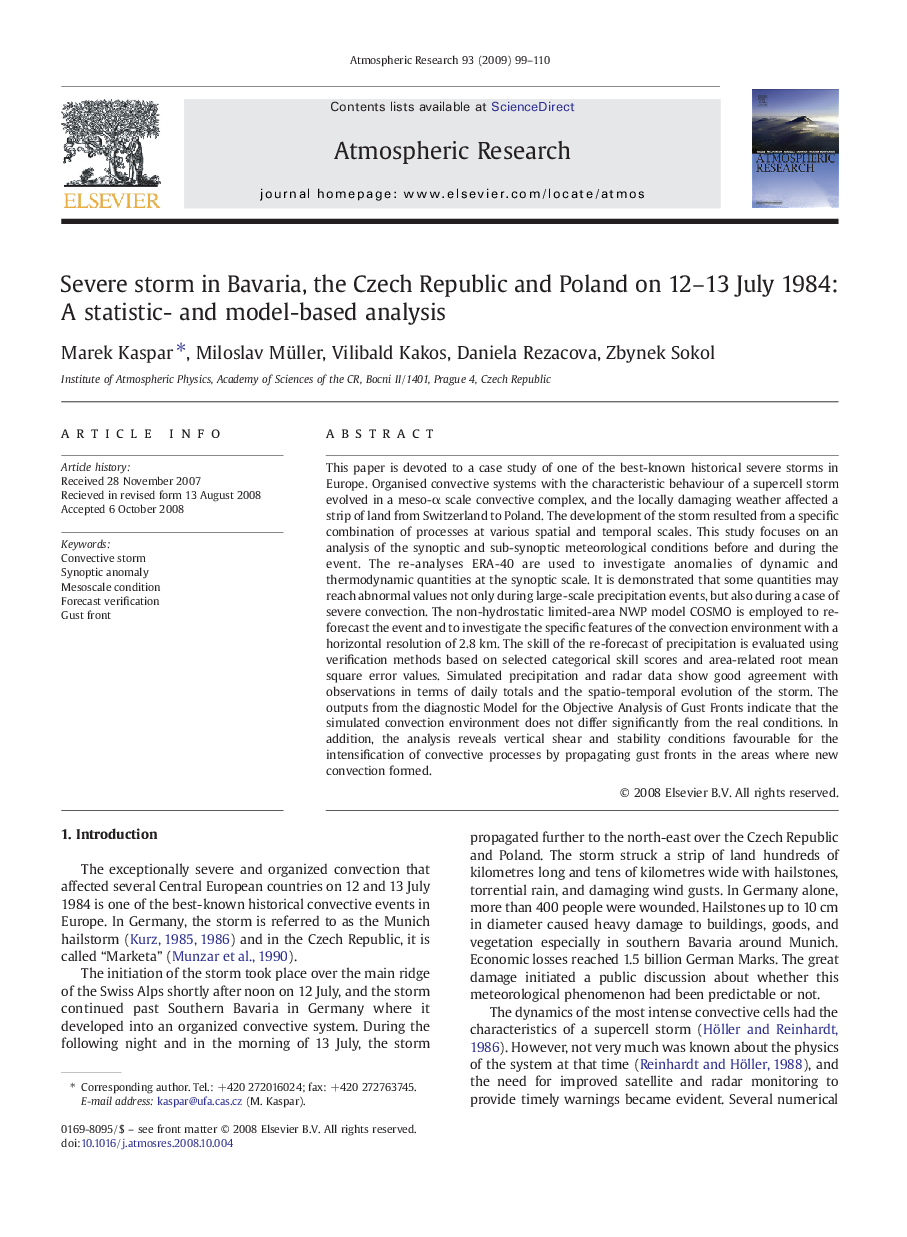| Article ID | Journal | Published Year | Pages | File Type |
|---|---|---|---|---|
| 4450709 | Atmospheric Research | 2009 | 12 Pages |
This paper is devoted to a case study of one of the best-known historical severe storms in Europe. Organised convective systems with the characteristic behaviour of a supercell storm evolved in a meso-α scale convective complex, and the locally damaging weather affected a strip of land from Switzerland to Poland. The development of the storm resulted from a specific combination of processes at various spatial and temporal scales. This study focuses on an analysis of the synoptic and sub-synoptic meteorological conditions before and during the event. The re-analyses ERA-40 are used to investigate anomalies of dynamic and thermodynamic quantities at the synoptic scale. It is demonstrated that some quantities may reach abnormal values not only during large-scale precipitation events, but also during a case of severe convection. The non-hydrostatic limited-area NWP model COSMO is employed to re-forecast the event and to investigate the specific features of the convection environment with a horizontal resolution of 2.8 km. The skill of the re-forecast of precipitation is evaluated using verification methods based on selected categorical skill scores and area-related root mean square error values. Simulated precipitation and radar data show good agreement with observations in terms of daily totals and the spatio-temporal evolution of the storm. The outputs from the diagnostic Model for the Objective Analysis of Gust Fronts indicate that the simulated convection environment does not differ significantly from the real conditions. In addition, the analysis reveals vertical shear and stability conditions favourable for the intensification of convective processes by propagating gust fronts in the areas where new convection formed.
